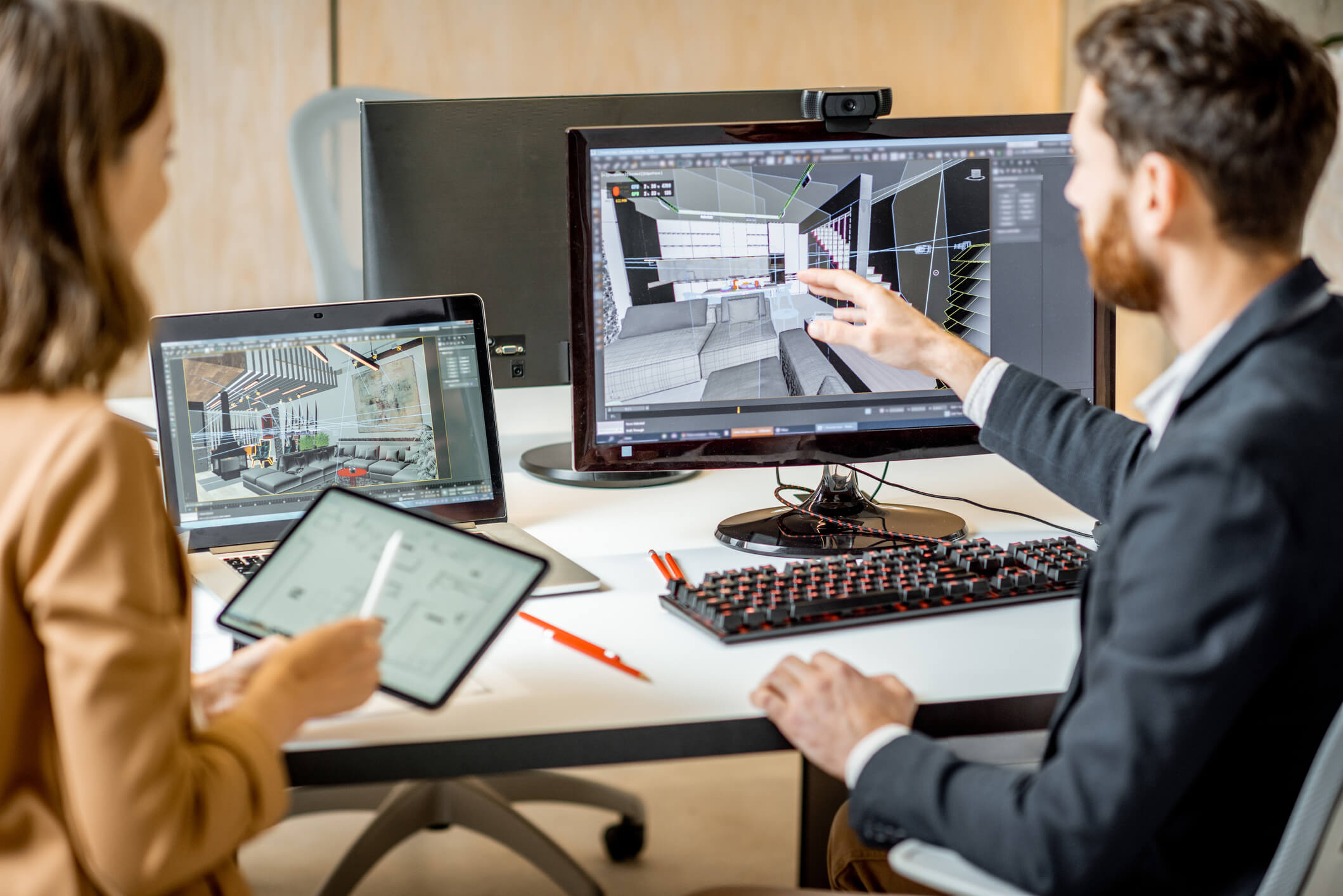Architecture is digitally evolving. Find out how your firm can keep up.
As our digitally-enabled world continues to transform, architecture practices are increasingly looking to digital tools to help lift their designs while still managing costs and improving efficiencies. While technology such as 2D and 3D computer-aided design (CAD) has been used for the last few decades, many practices are now beginning to accelerate their digital adoption following the changes brought on by the pandemic.
From substantial slowdowns in projects to adapting to remote work environments, technology has allowed many architecture practices to adapt rapidly to these challenges and continue offering their services. A 2020 report by the Australian Institute of Architects (AIA)1 found that 64.87% of respondents reported having had projects stalled as a result of COVID-19 while 30% of respondents reported stalled projects that were valued between $1 million and $5 million.

Delving into the digital realm
At the core of the digital transformation within the architecture industry lies the adoption of Building Information Modelling (BIM)2 – a tech-enabled workflow process that enables information management through the whole lifecycle of a building.
BIM enables architects, engineers, and contractors to communicate on designs by coordinating information in a three-dimensional, virtual construction environment. By facilitating collaboration across teams, BIM can help streamline design and construction processes, improve efficiency, and reduce waste and costs. This can help ensure faster and safer delivery of projects. According to a 2021 AIA study3, there has been an increased uptake of BIM in Australian architecture firms in recent times. While more than three-quarters (77%) of respondents feel that BIM improves coordination of construction documentation, 82% believe BIM will be used on the majority of projects in five years’ time.
Beyond the strong adoption of BIM, architects are also using other digital tools to improve design quality and productivity. PDF mark-up tools like Bluebeam are enabling collaboration on design documents in real-time across teams. Design automation tools are also helping architects focus on the creative aspects of projects by automating the more repetitive and mundane parts of the process. For example, computer-aided design and drafting software like AutoCAD claim to reduce design time by 41% and improve productivity by 69%4.
Given the iterative nature of the design process, such tools can give more control to architects by helping them quickly update their designs whenever changes are needed, and at scale across entire projects.
Cloud-based tools for today’s working environments
As architecture firms continue to recover from the uncertainties of the pandemic, they require solutions that can help them be more collaborative and agile. Cloud-based design tools such as Maya and Rhino can help ensure all project data is centralised and accessible to design teams across locations. Many of these tools can also accurately render designs that can be easily shared for approval.
Importantly, cloud-based design applications can help reduce costs, as firms don’t have to invest in IT infrastructure or large support teams. What’s more, enhanced security levels in cloud-based tools today help ensure data privacy and safety.

Becoming digital by design
While digital adoption in architecture has accelerated in recent years, awareness still needs to improve for firms to truly differentiate design technology from workflow processes. For example, a 2021 AIA study found a third of surveyed respondents5 assumed they had adopted the BIM workflow process simply by using an application like Autodesk Revit.
When it comes to emerging technologies, architecture firms in Australia are only beginning to consider their adoption. Only 13% of surveyed businesses were considering blockchain in their strategic planning while 12% of respondents were considering technologies like robotics and digital fabrication. As these technologies begin to go mainstream, firms may need to invest in them now so they can future-ready their business.
To be digital by design, an architecture firm may need the support of a robust, reliable, and scalable broadband network. Practices not including digital technologies in their strategic planning may miss out on the business benefits they can deliver and fall short of the standards expected by clients today. Thankfully, business nbn® Enterprise Ethernet+, available at more locations across Australia under business nbn's fibre initiative, is designed to help lift the digital capability of architecture firms.
Enabled by our business-grade network, through their chosen service provider partner, Australian architecture firms can move further into the digital realm with ease.
Find digital support for your business
Sources
- AIA | Measuring the Impact of the Pandemic 2020
- BSI | Building Information Modelling
- AIA | BIM and Beyond: Design Technology in Architecture 2021
- Architecture & Design | Architecture’s digital realm: how technology is enhancing architects’ productivity
- AIA | Architecture’s Digital Evolution: Client Interest in New Tools Exceeds Expectations
business nbn Enterprise Ethernet is only available in the business nbn fibre zones, nbn Fixed Line network footprint and at limited premises served by the nbn Fixed Wireless and Satellite networks. Not all providers offer plans based on the full range of wholesale business nbn products, product features and services and availability of these depends on the customer’s access technology and area.
